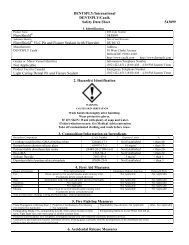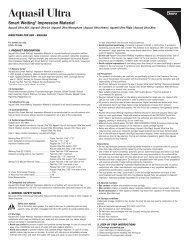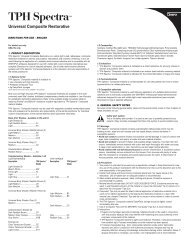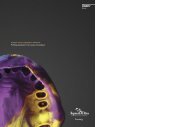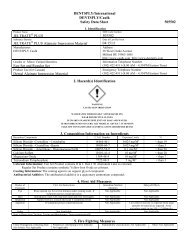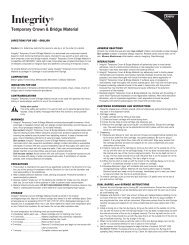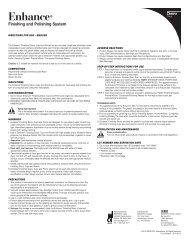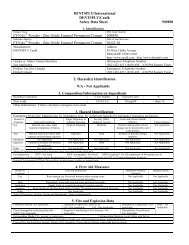Indirect and Direct Restorative Protocols - Caulk
Indirect and Direct Restorative Protocols - Caulk
Indirect and Direct Restorative Protocols - Caulk
Create successful ePaper yourself
Turn your PDF publications into a flip-book with our unique Google optimized e-Paper software.
“I use Xeno IV for my patients<br />
because of its simplicity <strong>and</strong> its<br />
ability to eliminate postoperative<br />
sensitivity in my patients.”<br />
Ronald A. Feinman, DDS<br />
Private practice, Atlanta, GA<br />
Figure 3. After conditioning of the enamel <strong>and</strong> dentin, an adhesive agent<br />
is applied with a fl ocked applicator to moisten the tooth surfaces.<br />
Figure 4. Finishing of the direct resin restoration is conducted using<br />
Enhance ® Finishers, followed by PoGo ® One-Step Diamond MicroPolishers<br />
for the fi nal polish.<br />
Table. Recommended Adhesive According to Clinician Profile<br />
User Consideration<br />
Prime &<br />
Bond ® NT XP Bond Xeno ® IV<br />
My preparation is confined to enamel ■ ■<br />
My preparation extends into the dentin layer<br />
■<br />
I occasionally have difficulty judging moisture levels on my conditioned cavity ■ ■<br />
Long-term clinical performance is more important to me than ease-of-use<br />
■<br />
Reducing my patients’ postoperative sensitivity is paramount<br />
■<br />
Marginal fit is imperative ■ ■ ■<br />
I generally prefer the total-etch technique ■ ■<br />
I usually employ the self-etch technique<br />
■<br />
I prefer the ease of application <strong>and</strong> simplified h<strong>and</strong>ling of a one-bottle solution ■ ■ ■<br />
When used as an adhesive agent for an indirect restoration, XP<br />
BOND does not need additional curing. The material will<br />
completely “dark cure” on its own even if parts of the bonding<br />
interface are not light cured.<br />
Self-etch, non-rinsing adhesives are also available to condition<br />
<strong>and</strong> prime enamel <strong>and</strong> dentin simultaneously without separate<br />
acid etching. Self-etching adhesives penetrate the smear layer<br />
<strong>and</strong> partially dissolve hydroxyapatite to generate the hybrid layer.<br />
One-bottle, self-etch adhesives such as Xeno® IV (DENTSPLY<br />
<strong>Caulk</strong>, Milford, DE) are often regarded as more convenient <strong>and</strong><br />
less technique sensitive (Figures 1 through 4), as their application<br />
time is reduced compared to etch-<strong>and</strong>-rinse adhesives or<br />
two-bottle, self-etching systems. These adhesives do not require<br />
a moist dentin substrate because of the water inherent in their<br />
composition, <strong>and</strong> no etching is involved.<br />
The availability of adhesive systems that coincide with<br />
a clinician’s preferred bonding technique (Table) has thus<br />
simplified the delivery of direct resin restorations. Once the<br />
tooth surfaces are properly conditioned <strong>and</strong> the adhesive<br />
agent has been applied <strong>and</strong> cured, incremental layers of a<br />
universal composite such as Esthet•X® or TPH®3 (DENTSPLY<br />
<strong>Caulk</strong>, Milford, DE) can be placed to achieve an aesthetic<br />
restoration with excellent physical properties <strong>and</strong> longevity.<br />
Consequently, concepts such as adhesive dentistry, aesthetics,<br />
<strong>and</strong> simplicity—once distant goals—can now be conducted<br />
in daily practice. ■<br />
30



